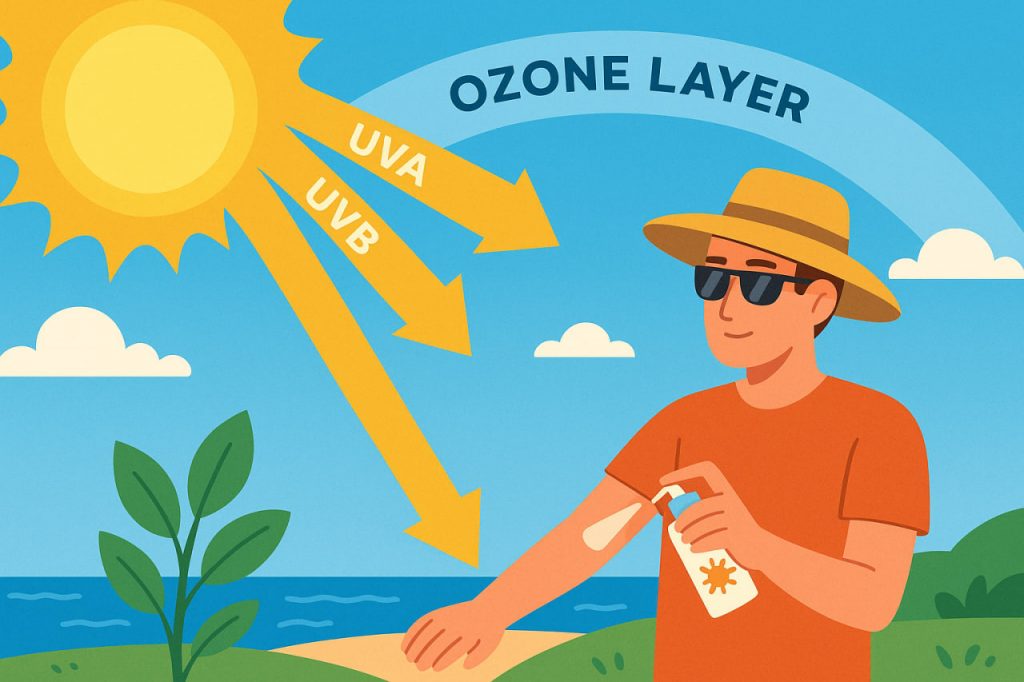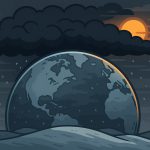High above the Earth, in the stratosphere, lies a thin yet vital layer that protects every living creature from deadly solar radiation — the ozone layer. Invisible to the naked eye, this fragile shield absorbs most of the Sun’s ultraviolet (UV) rays, preventing them from reaching the surface. Without it, life as we know it would not exist. Understanding the ozone layer’s function, threats, and recovery efforts is crucial for preserving the planet’s health and future generations.
What Is the Ozone Layer?
The ozone layer is a region of the stratosphere, located between 15 and 35 kilometers (9–22 miles) above the Earth’s surface. It contains high concentrations of ozone (O₃) — a molecule made up of three oxygen atoms. Unlike regular oxygen (O₂), which we breathe, ozone forms when ultraviolet light splits oxygen molecules, allowing individual atoms to bond with O₂ and create O₃.
This dynamic process — constant creation and destruction of ozone — maintains a delicate balance. The ozone layer acts as a natural filter, absorbing up to 97–99% of the Sun’s harmful ultraviolet-B (UV-B) radiation, which causes skin cancer, cataracts, and genetic damage in living organisms.
How the Ozone Layer Protects Life
UV radiation from the Sun comes in three main types: UV-A, UV-B, and UV-C.
- UV-C is the most dangerous but is completely absorbed by ozone and oxygen in the upper atmosphere.
- UV-B is partially absorbed by ozone; too much exposure can harm DNA, plants, and marine ecosystems.
- UV-A is less energetic and penetrates more deeply but can still cause long-term skin damage.
By blocking most UV-B and UV-C rays, the ozone layer preserves the genetic stability of all life on Earth.
The Discovery of Ozone Depletion
In the 1970s, scientists Mario Molina and F. Sherwood Rowland discovered that chlorofluorocarbons (CFCs) — chemicals used in aerosols, refrigerants, and foam production — were drifting into the upper atmosphere. Once there, UV light broke them apart, releasing chlorine atoms that destroyed ozone molecules.
Each chlorine atom could destroy up to 100,000 ozone molecules before being deactivated. This process led to the formation of the infamous “ozone hole” — a massive thinning of the layer over Antarctica discovered in 1985 by British researchers.
The Montreal Protocol: A Global Success Story
In 1987, the world united to sign the Montreal Protocol, an international treaty banning CFCs and other ozone-depleting substances. It remains one of the most successful environmental agreements in history. Since then, the ozone layer has shown signs of gradual recovery, thanks to international cooperation and technological innovation.
According to NASA and the World Meteorological Organization (WMO), if current trends continue, the ozone layer could return to 1980 levels by the mid-21st century.
Why the Ozone Layer Still Matters Today
Although recovery is underway, the ozone layer remains vulnerable. Certain replacement chemicals, known as HFCs (hydrofluorocarbons), do not deplete ozone but are potent greenhouse gases, contributing to global warming. Balancing ozone protection with climate stability is now a key challenge for policymakers and scientists.
Additionally, volcanic eruptions, rocket launches, and unregulated chemicals can temporarily weaken the ozone layer. Continued monitoring from satellites ensures that any new threats are quickly identified.
The Connection Between Ozone and Climate
The ozone layer is not only a protective shield — it also affects global temperature patterns. Ozone absorbs UV radiation, warming the stratosphere and influencing wind circulation. As the ozone hole heals, it may alter regional climates, especially in the Southern Hemisphere, changing wind and rainfall patterns.
How Individuals Can Help
- Avoid products containing banned or unregulated refrigerants.
- Support climate-friendly technologies that reduce emissions.
- Stay informed about environmental policies and scientific developments.
Protecting the ozone layer is not just about science — it’s about sustaining life and ensuring a stable planet for generations to come.
Interesting Facts
- The word “ozone” comes from the Greek ozein, meaning “to smell.”
- The ozone hole over Antarctica reaches its maximum size each September–October during the Southern Hemisphere’s spring.
- A single chlorine atom can destroy ozone for years before being neutralized.
- The Montreal Protocol has prevented millions of cases of skin cancer worldwide.
Glossary
- Ozone (O₃) — a molecule made of three oxygen atoms that absorbs harmful UV radiation.
- Stratosphere — the atmospheric layer above the troposphere where the ozone layer resides.
- CFCs (Chlorofluorocarbons) — human-made chemicals that deplete the ozone layer.
- UV radiation — ultraviolet light from the Sun that can damage DNA and living tissue.
- Montreal Protocol — an international treaty to phase out ozone-depleting substances.


